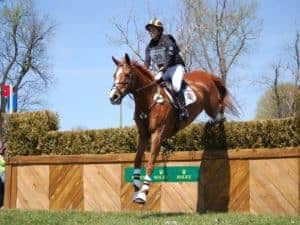Diagnosing Upper Cannon Area Injuries
Pain originating in the upper cannon bone area, just below the knee or hock, is common in all types of equine athletes. However, it can be difficult to determine exactly what structure is injured; some injuries can only be seen with high-field MRI. At the 2007 American Association of Equine Practitioners Convention, held Dec. 1-5 in Orlando, Fla., Matthew Brokken, DVM, clinical assistant professor of veterinary clinical sciences at the University of Florida, described a Washington State University study of lameness originating in this area.
"Detection of abnormalities, specifically desmitis (ligament inflammation) of the inferior check ligament (ICL) and proximal suspensory ligament (PSL), has not been possible in some horses (via radiography or X rays, ultrasound, or nuclear scintigraphy)," he explained.
For the retrospective study, 45 horses with lameness localized to the proximal metacarpus/metatarsus (upper cannon bone area) were selected. Most were Warmbloods (20) and Thoroughbreds (12), and the horses ranged from 3 to 17 years of age. All were lame; 22 had been lame for less than four months, 22 for longer, and one had been lame for an unknown time. Forelimb lameness affected 29 horses. Thirty-one horses were grade 3/5 lame, nine were grade 2 lame, and one was grade 4. All were imaged with a high-field (1.0-tesla) MRI system.
"The use of MRI in this area allowed an accurate diagnosis in 44 of 45 horses," Brokken reported. "The transverse proton density sequence was the most helpful in detecting subtle changes in signal and size within the ICL and PSL. Having an accurate diagnosis enabled appropriate treatment in these horses, which helped a high percentage of them to return to their intended use
Create a free account with TheHorse.com to view this content.
TheHorse.com is home to thousands of free articles about horse health care. In order to access some of our exclusive free content, you must be signed into TheHorse.com.
Start your free account today!
Already have an account?
and continue reading.
Related Articles
Stay on top of the most recent Horse Health news with

















